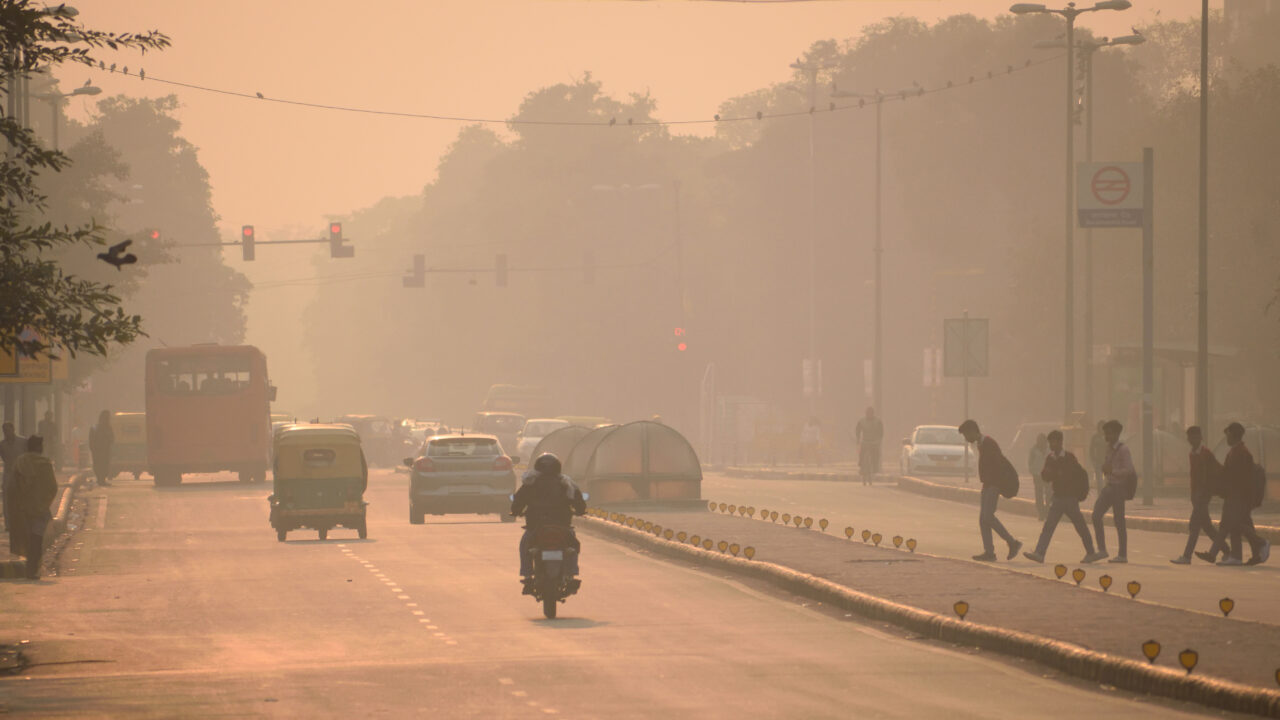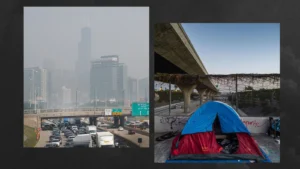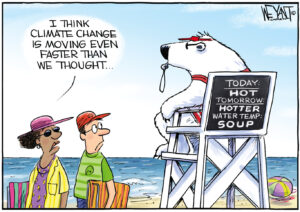Fossil Fuels Make Every Breath People Take in Asia Deadly
New data last week from University of Chicago researchers showed that across South Asia, air pollution—mostly from burning fossil fuels—is robbing people of five years of life on average. People walk the streets of Delhi amidst a thick smog. Image: Adobe
People walk the streets of Delhi amidst a thick smog. Image: Adobe
When we talk about “humanity,” we are, statistically, mostly talking about Asia—just under 60% of our sisters and brothers live there. But they don’t live anywhere near as long as they should.
New data last week from University of Chicago researchers showed that across South Asia, air pollution—mostly from burning fossil fuels—is robbing people of five years of life on average. Five years! If you live in Delhi, the most polluted big city on the planet, that number is an unimaginable 11.9 years. If you would have lived to 70, you died at 58. Thank about that. Across the region, “particulate pollution levels are currently more than 50% higher than at the start of the century and now overshadow” other health risks. Every breath that people take is killing them, every hour of every day.
But those other health risks are also rising fast, spurred on by the climate disasters that also come with burning fossil fuel. A remarkable report in Tuesday’s Washington Post (which has been doing a lot of remarkable climate coverage lately) was headlined “Climate-Linked Ills Threaten Humanity,” and for a while was the lead story in the paper. It looked at Pakistan, home to last year’s record-breaking flood and a series of devastating heatwaves, and found almost unimaginable levels of misery. Here’s the big picture:
Pakistan is the epicenter of a new global wave of disease and death linked to climate change, according to a Washington Post analysis of climate data, leading scientific studies, interviews with experts, and reporting from some of the places bearing the brunt of Earth’s heating. This examination of climate-fueled illnesses—tied to hotter temperatures, and swifter passage of pathogens and toxins—shows how countries across the globe are ill-prepared for the insidious, intensifying risks to almost every facet of human health.
And here’s what it looks like on the ground:
On a recent 109°F day, babies wailed and adults vomited into buckets in the crowded heat stroke ward of Syed Abdullah Shah Institute of Medical Sciences, a 350-bed government medical center in central Sindh. With just seven beds for heat stroke victims, patients’ parents and relatives crowded together on the mattresses.Nurses in green scrubs attached bags of intravenous hydration fluids to the arms of even the tiniest patients as fans whirled and two air conditioners dripped and chugged.
The number of heat stroke patients coming to the hospital in summer has increased around 20% a year in the last five years, according to M. Moinuddin Siddiqui, the hospital’s medical director, at a time when Pakistan experienced three of its five hottest years on record.
So, bottom line: When you burn fossil fuel you produce particulates which lodge in lungs and kill you (1 death in 5 on the planet comes from breathing the byproducts of fossil fuel combustion), and when you burn fossil fuel you produce carbon, which lodges in the atmosphere, driving heatwaves and floods that kill you.
So, bottom line: When you burn fossil fuel you produce particulates which lodge in lungs and kill you.
If fossil fuel was the only way we had to power our lives, I suppose you could tot up its advantages and decide that, on balance, it was still worth burning. Or not. But fossil fuel is not the only way we have to power our lives. India has 300 clear and sunny days a year on average, enough to produce 5,000 trillion kilowatt-hours (kWh) per year. Which is, um, more than they need—solar farms on a small percentage of “low-conflict wastelands” in the country could provide four times its power requirements. According to a recent World Bank study, utilizing just 0.071% of Pakistan’s area for solar PV would meet the country’s current electricity demand. No, none of this comes for free—you have to mine lithium and cobalt. But the damage from those activities doesn’t begin to compare in scale to the toll that fossil fuel is exacting every hour from billions of human bodies.
By any measurable moral calculation, focusing the planet’s efforts and finances on rapidly converting Asia (and Africa and South America) to renewable energy would provide the largest imaginable payoff, both in the short-term and the long, and for both the people who live there, and for the smallish percentage of humans who don’t. But that would mean standing up to the fossil fuel industry—including in America, where that industry is eager to export more, not less, fossil fuel to Asia.
Carbon dioxide molecules are invisible, and particulates are too small to be seen with the naked eye. But they will break our bodies, and our civilizations, unless we break the power of the fossil fuel industry. That is the choice.
America set us on the hydrocarbon path. Asia, with help from the whole world, could be the place that got us off.
Your support matters…Independent journalism is under threat and overshadowed by heavily funded mainstream media.
You can help level the playing field. Become a member.
Your tax-deductible contribution keeps us digging beneath the headlines to give you thought-provoking, investigative reporting and analysis that unearths what's really happening- without compromise.
Give today to support our courageous, independent journalists.






You need to be a supporter to comment.
There are currently no responses to this article.
Be the first to respond.